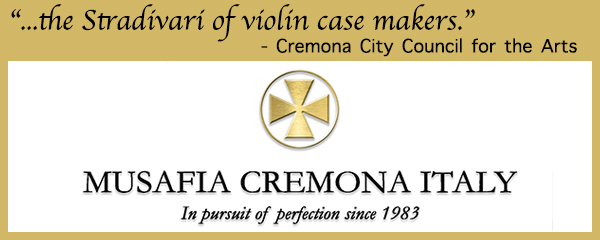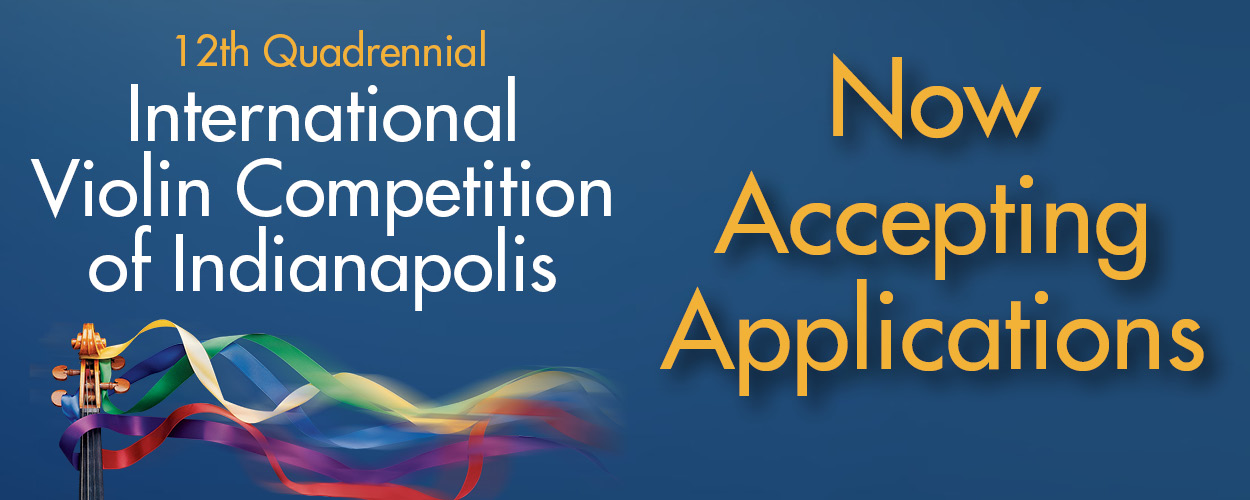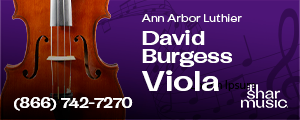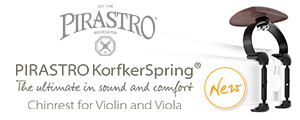Is this compilation (in 12 books) enough for going from beginner to paganini-level?
Hi! i found this compilation book from Arthur Seybold on IMSLP:imslp.org/wiki/Neue_Violin-Et%C3%BCden-Schule%2C_Op.182_(Seybold%2C_Arthur)
it goes from very easy studies in 1st position (about Suzuki's Minuet 1 - level) until the hardest of studies from Gavinies and Paganini on book 12. it even have Bach's sonatas/partitas excerpts to study here and there.
Another book with the same style is Mathieu Crickboom compilation:
imslp.org/wiki/Les_ma%C3%AEtres_du_violon_(Crickboom,_Mathieu)
it goes from very easy Wohlfardt on book 1 until Gaviniés, Locatelli, Rode, etc. on book 12. (Imslp have only books 1-11. the 12nd i found in another site)
So, aside technical stuff like sevcik or shradieck and scale studies, it's ok to say these 12-books compilations from Seybold or Crickboom are really good and i can choose one and go from start to finish without the need to go to books from Mazas, Don't, Kreutzer themseves? because there's many studies from each of them on Seybold or Crickboom compilation, in order of difficulty.
and comparing them with Whistler's "preparing to kreutzer"? whistler accomplished this with just 2 books until kreutzer, and Crickboom and Seybold have many, many books before kreutzer appear on their list. i will get same results with any of them but in much less time with whistler's book?
Does Crickboom / Seybold really show everything a violinist need? I want to know what is the best route from these options without adding the "specific necessities from each student", just plain overall basic generic route.
are they covering all we need on the well-known "wohlfahrt - kayser - mazas - fiorillo - kreutzer - etc." books route?
at least they adress the sensible problems of going from an easy-starting but hard-ending etude book to another easier-starting-than-before but hardest-than-before etude book, and so on, because it's all rearranged in order of difficulty.
thanks in advance if anyone answer this question or at least have good thoughts to share.
EDIT: I've found another compilation, from Carl Flesch:
https://imslp.org/wiki/Et%C3%BCden-Sammlung_(Flesch%2C_Carl)
this seems to be on par with Crickboom's method, but in only 3 books instead of 12.
Replies (24)
There are many sets of books like this. You may have heard of the one by Suzuki. But learning the violin is not about just playing through a progression of pieces or studies. It's about HOW you play them and whether you're learning to play the violin properly. The exact mechanics of your posture, stance, arms, hands, and fingers will be essentially impossible to get right without expert tutelage.
If you are determined to be self-taught then I suggest you get a book called "The Violin Lesson" by Simon Fischer.
i have the Joachim's books. the last one is just a compilation of concerto pieces arranged in order of year, right?
the second book i think advance a little too fast. all positions in 100 pages is too much in too little time for me. too little time from 4th position and up. i'd rather go with something slower advancing, to absorb each detail (i have ADHD, so i don't know if all positions in just one single book is ok for others). but the first book is phenomenal! (but a little fast for me, too. i went though him after complete the maia bang first 2 books just to see how much harder it is (it becomes harder than the end of maia bang's second book about in the middle of bk1!
I've collected a number of different books along the way, and I'm sure every violinist does, but the books can't explain the nuances of a concept in the way that a teacher can in a single lesson or in a few lessons, so the question in this post kind of confused me. There's a pretty good standard progression to Paganini and there's a reason that there are hundreds of books of technique and etudes and explanations that aren't part of the core repertoire; it's because there are no magic bullets.
You spend time with your teacher, you learn how to practice, you develop your ear, you come back to pieces and concepts that used to baffle you with new understanding, and they make more sense, and then you go and struggle and you come back again, and you work in a spiral like that, and eventually you find yourself with a decent technique, and it's rare that some unknown book along the way is going to give you a ladder to ascend to a new plane of playing.
The path isn't the 'generic' one, it's the one that has proven to work by being tested for decades and centuries. Detour from it at your own peril, and not having a good teacher may as well be trying to walk it with no shoes on.
i used to do the same with my students, almost no one knew what i'm giving to them, just exercises and studies. later i started to introduce some names for their overall knowledge about the great masters and teachers.
and what a surprise you used all the Crickboom books in the past!
please, can you compare it to Seybold and see if it's about the same goodness? because somehow i liked Seybold more (he explains some little things before each etude, i'm more inclined for things like these). as i said on one reply i'd prefer slower-advancing methods too, and crickboom starts the higher positions (4th, 5th, etc) very fast, and seybold have 3 books just for positions 2 and 3, i like this format.
@Christian Lesniak:
Sorry, i think i didn't expressed myself the right way. what i meant was the "generic" path was the "best" path, the one everyone goes until Paganini. and those compilation i showed uses many, if not all the books from this righ path, but ordered in difficulty in a rational manner. of course the teacher's knowledge is more important than everything. i want to know everything i asked already with this "teacher's knowledge" being applied on the choices made. i'm just curious because i never see on sites or forums about this kind of compilations being used, and at the same time i'm presenting them for everyone who doesn't know about them.
@Mary Ellen Goree
@Paul Deck
@Christian Harvey:
I know these compilations can be very useful, i'd rather go with a compilation book than pick each study independly. the compilation makes the process easier. the teacher, like i've said to Christian, of course will have the knowledge of how to apply this kind of compilation and if necessary add more things too. I am a teacher already. not advanced, i'm doing the suzuki books right now with a more experienced teacher and i'm on Book 6. but i already have experience to teach earlier levels, i've made some specialized courses and i'm part of a specific group of great professors who teaches here in Brazil. all i wanted was to know the opinion of the experienced violinists from this forum, this is always very welcome!
@Adrian Heath:
I agree. for me each etude is to be studied until you can play them really beautiful, worth of a presentation on an event, with ease and surety. like a Suzuki piece. if it's not on this level of mastery, there's something more to be learned from the etude in question.
He intended that all 5 of his series shoud be used together:
Le violon theorique et pratique. (The Violin - Theory & Practice,)
-This is a proper method intended to be used from the first lesson until year 6. Full with pictures and explanations.
Chants & Morceaux
-Melodies and shorter pieces to enforce what you learn in the books above
Technique du violon
-Excercises and scales, used from beginners to year 8.
Les Maistres du Violon
-The etude collection used from year 2 until year 8.
Duos Progressifs
-Duets to enforce good habits. Used between year 2-4.
His etude books 'Les Maistres du Violon' should not be started until year two.
And besides these 5 series he edited almost 40 of the most popular student works/concertos and graded them to be used at the same time, from Accolay up to the Mendelssohn concerto, full of guide notes etc.
Probably intended to be used from about year 4/5.
All these 5 series together is probably the best effort to help the teacher I have ever seen.
That's a good point about 4th finger. 1st position really is hard, and even harder when extreme extensions have to be done (for example tenths). yes, Seybold starts earlier, that's what i liked. i can start with the first lessons as early as Minuet 1 from Suzuki 1. maybe do book 1 from Seybold and after this start somewhere on book 1 from Crikboom (adjusting where seybold left in difficulty) and keep with him until the end. Seybold have Paganini on book 12, crickboom doesn't, but i could just go to paganini caprices after finishing Crickboom.
@Mattias Eklund
Yes, i have all the books from "Le violon theorique et pratique", Crickboom have a very handy table with the exact route of each of his compilations and methods. sadly i couldn't find all the books from "Chants & Morceaux" and "Technique du violon", but i could just use any other compilation of encore pieces and schradiek or sevcik, and "beautiful music for 2 violins" instead of his Duet books.
what i was curious is about this student works/concertos you said he edited, i couldn't find anywhere. can you give me a light on where i can find them?
I love when methods give directions of what can be done when the student reaches some threshold. Kutchler's Method have this on his books, indicating etude books, pieces, etc. as the student advances on the lessons.
A good teacher can suppliment or change any etude from any collection to an other that suits the students need better, but few students have that insight.
His Technique books (there are three) and some of his edited works are still being published by Schott: https://www.schott-music.com/en/catalogsearch/result/?q=crickboom
Yes i know, i am a teacher myself, so i will substitute the books i don't have with equivalents for my students.
@Gordon Shumway:
Actually my ADHD make me have an hyperfocus on violin teaching, violin studies and everything violin-related. i gathered many pdf's of almost all the method books, etude books, scale books, encore pieces, student concerti, sonatas, duos, standart concerto, etc, etc and organized every single one of them by grade, using clues from ABRSM, RCM, ASTACAP, some other graded schools from around the world, the archived Westbury Park Strings site, some indication from master teachers, everything very well organized in each of the 12 folders (each for one grade), and i am using this big compilation o'mine to myself and my students (i'm actually studying things from grade 4 to 5, my students between 1 and 3), grade 10+ being the place of major concerti, paganini, ysaye, ernst, etc. what i want with the Crickboom or these other compilations is make some abreviation of what i've done to the etudes. i am really willing to follow this route, exactly because i know how ADHD works and i'm a victim of this. many diverse books to tacke an exact order = very demanding for my brain (but doable), so if a compilation is equaly good, i want to follow it. i will use it with my pupils when they're ready for it and for me right now.
On a side note, i've found ANOTHER great compilation. it's from Carl Flesch, in 3 books, from 1st position kayser-level etudes upwards to the hardest kreutzer, rode, gavinies, etc. it seems a very good one too!
https://imslp.org/wiki/Et%C3%BCden-Sammlung_(Flesch%2C_Carl)
it's 150 etudes (in contrast to 300 etudes from Crickboom and Seybold ones)
oh, so many choices... if i just had the lifetime required to do every one of these compilations...
But may I ask why you ask? As a teacher you probably already know the answer to your question?
And Crickboom and Flesch are 2 very different beasts. Crickboom is intended for 1 etude per week, and Flesch is most definitly not. When you mastered the etudes in Flesch you are at a very advanced level, ie Paganini and Brahms concertos level, but when you mastered Crickboom you are at Mendelssohn and Wieniawski 2nd concerto level.
But as a teacher I am sure that you already know that.
Isn't Carse's book only for beginners until intermediate about 5th position? I'm trying to find books from late-beginner / intermediate until the very advanced.
Stecenko's collection is in another language (russian? martian? i really don't know) so i pass.
i didn't knew Heim's Gradus ad Parnassum, it seems to go until the very end with Bach's entire sonata, paganini, prume (i don't see Prume on other compilations), polyphony and such. i liked it!
So even Crickboom being very complete on his way of teaching, his etude compilation doesn't go until the very very advanced. Maybe after the 12nd book i can start with the 12nd book of seybold, it have the more advanced studies untill paganini. or can i just stick with Carl Flesch etudes from start to finish? you said it's different in which sense? more weeks in each etude because the jump from one to the next is bigger?
I'm asking (and answering your question now) because i am still far away from advanced studies on my knowledge as a teacher and as a student too.
like i said, i'm still on suzuki 5-6 level. but i have all the base to teach lower-level pupils. so i don't know everything about the more advanced studies. that's why i am asking these questions, to get help of who knows more than me.
Just to clarify, Suzuki book 5-6 is equal to about 2-3 years of study according to Crickbooms levels.
With that in mind, how long does it take for the normal student to reach that level today? 5-6 years? So to get to the last of Flesch etudes you have perhaps 20 years of study for the "normal" student.
Very few students reach that level, and most of them don't take 20 years.
But as a thought experiment let's go with that.
20 years, that is some 800 weeks of lessons. How many etudes does a student need in that time not to get bored?
No. You should not "stick" to one collection of books. You should for the beginner have all of Wohlfahrt, Sitt, Kayser, Meerts, Mazas, Hohmann, Beriot, Dancla, Hermann, Dont, Bruni, Alard, Benda... etc at hand (or in "best of" collections) and choose the best study for that perticular situation. What the student needs at that perticular moment. Not what a dead guy writes in a book.
The most tried and proven "collections" is in this order; Kreutzer, Rode, Dont, Wieniawski, Paganini. But interjected with studies, exercises and so on that the student needs at that time.
And Kreutzer is concidered as the "basics" for violin technique in many ways, and is technically harder than Book 10 by Suzuki.
I am a new student to the violin. What I found is these types of books are a good tool in the process of learning but do not take the place of a structured course and teacher.
In fact, they can backfire on you. In my case, I found I was devoting most of my practice time to exercises and little on actually learning a piece. This led to the point where I was starting to get bored.
Diego writes in his original post:
"I want to know what is the best route from these options without adding the "specific necessities from each student", just plain overall basic generic route."
My opinion is that it is not possible to teach any student successfully in that way.
no, no, what i meant about 'without specific necessities' was:
i will go with a compilation and WHEN the student needs something extra i will supplement. i just wanted some route to start with, and correct with extra material when the student needs it.
i think now it's more clear.
@jean dubuisson:
ok, ok, i'm going to practise now.
This discussion has been archived and is no longer accepting responses.
Violinist.com is made possible by...
Dimitri Musafia, Master Maker of Violin and Viola Cases
International Violin Competition of Indianapolis
Violinist.com Holiday Gift Guide
Johnson String Instrument/Carriage House Violins
Subscribe
Laurie's Books
Discover the best of Violinist.com in these collections of editor Laurie Niles' exclusive interviews.

Violinist.com Interviews Volume 1, with introduction by Hilary Hahn

Violinist.com Interviews Volume 2, with introduction by Rachel Barton Pine














From a pedagogical view, it seems like a nice collection of studies that have already been curated by a well-accomplished violinist and could be viewed as a "reader's digest" version of violin technique. I'm not familiar with Arthur Seybold, but Mathieu Crickboom was a very good violinist who studied with Eugene Ysaye. So much so that Ysaye dedicated his 5th solo sonata to him.